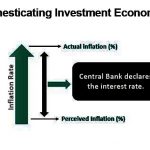July 05, 2023 (MLN): In this era of hyperinflation investment managers of Life Funds are under immense pressure to generate alpha returns to support policyholder obligations, ensure solvency and maintain business competitiveness. The article discusses the pros & cons of pursuing alpha returns by Life Insurance Companies and offers a framework to achieve the same without defying the basic concepts of managing investment for insurable liabilities.
What are Alpha Returns?
Alpha returns, alternatively known as “Excess Returns over benchmark index” is the return on a stock investment that is incrementally more than a benchmark index return, such as the PSX-100 index, for a given period of time.
An alpha of 1% means that the investment’s return of a stock fund is 1% better than the market returns. For example, if a stock fund returned 12%, and the PSX-100 returned 10% in a given period, then alpha is 2% for the stock fund.
Alpha returns are the direct result of capitalizing on investment opportunities. As opportunities are short-lived & seldom, thereby, it is like the famous saying “put the bucket not the thimble when it rains gold”. Therefore, the actualization of alpha returns requires Active Investment Management for identifying and exploiting investment opportunities that came along the way. Experience and personal judgment of fund managers on the one hand and delegating discretionary authority to fund managers on the other hand are key determinants for the successful pursuit of alpha returns.
What Returns Meant to Life Insurers?
Life insurers manage investments primarily in relation to policy liabilities, such as to cover claims & benefits underwritten in the past. They are under a regulatory obligation to hold sufficient assets all the time as a reserve for the continuity of the business.
To build up the required reserves, life insurers invest premiums, net of all operating & risk coverage expenses, in the most secured assets with the objective of generating a competitive investment return to support policyholder obligations, preserve the solvency and ensure growth in reserves in proportion to growing insurable liabilities.
That is why a predictable and dependable investment return is the most sought thing by a life insurer as against an occasional windfall return. They assure achieving of this through an investment strategy orchestrated around:
- Deliberated investment objective
- Calibrated Risk Tolerance Measures
- Compatible Strategic Asset Allocation &
- Strict Regulatory Compliance
The Dilemma for Life Insurers:
This is where Alpha returns appear in defiance of the basic philosophy of managing a liability (Life) fund. The former requires Active Investment Management whereas the latter emphasizes adopting Conservative Investment Management. Relying on the skills & experiences of a fund manager and permitting him/her to assume higher risks are considered norms for pursuing alpha return while investing in low-risk assets is a regulatory obligation for liability funds. The former gives discretion to fund managers for capitalizing on an investment opportunity that comes in the way while the latter demands adherence to investment guidelines for selecting and evaluating the same before executing.
Should it mean that life insurers do not pursue alpha returns?
The Option Before!
Though the obligatory nature of the life insurance business does not encourage to venture into uncharted water for excess return, yet does not restrict from assuming a calculated risk for a return incremental than the market return with safety of margin, i.e. the valuation loss will not affect the solvency of the business in any way.
The path for Alpha Returns:
“Ladder Approach” is the one fund managers of life insurance may consider pursuing Alpha returns. The approach breaks the total investment returns into three components that are to be achieved in a sequential progression.
- Risk-free returns
- Market returns (Beta)
- Excess returns (Alpha)
Risk-free Return – The First Step in the Ladder:
Risk-free return is the returns earned by investing in government securities such as Treasury Bills and Pakistan Investment Bonds. The return objective is to build the reserve through a dependable & predictable income stream over a long period of time. However, returns earned from such investments are nominal.
Market (Beta) Returns – The Second Step in the Ladder:
Once a reserve is built up and solvency is taken care of, fund managers may go for enhanced returns. At this stage return objective is to earn returns on investment comparable to market returns. This is achieved by aligning funds with the benchmark index.
It requires constant monitoring of environments and identifying emerging investment opportunities and re-alignment of asset classes to capitalize on the same fall within the ambit of ALM. Market (Beta) returns usually take care of the growth aspect of the business.
Alpha “Excess” Returns – The Third & Final Step on the Ladder:
With the address of solvency and growth of the core business, fund managers are loaded with the needed flexibility to leverage a portion of the fund to target alpha returns, returns over and above-combined returns of Risk-free and beta returns.
The Conclusive Remarks:
Alpha returns are uncommon & unpredictable, as opportunities for alpha returns seldom appear and are short-lived. Moreover, only a small portion of total investments offers Alpha returns.
No doubt it helps in achieving & maintaining a competitive position in the industry but the minuscule presence of it in total return on returns does not make it a prime candidature assuming aggressive risk.
Life insurance companies that are in the latter or maturity stage of the business cycle may opt for alpha returns. Yet their focus should remain on investing in assets that fall within the risks & returns matrix relative to the market and economic value of insurable liabilities.
Copyright Mettis Link News
Posted on: 2023-07-05T11:30:21+05:00








